The Balinese Temple Ceremony
Everything in Bali is two hundred meters from here. The island itself may in fact only be two hundred meters wide and two hundred meters long. To get from here to wherever we are staying? Two hundred meters. To get from here to the temple ceremony we were supposed to be at twenty minutes ago? Just two hundred meters more. The Balinese are either really bad at judging distance or unclear on the English words for numbers larger than two hundred.
We’ve been walking up this hill for at least 2km and we still haven’t caught sight of the temple, though now we can hear the drums, which is encouraging. One last local walks by, “Excuse me, it this the road to Tegallantang? Yes. How much farther is it? “Just up the road. Maybe two hundred meters.”
As it turns out, he’s the only one to say two hundred meters and literally be right about it.
Two days earlier we were out wandering the streets when it started to rain. We ducked into the nearest restaurant for lunch. Toward the end of the meal, as the rain was dying down and we were getting ready to leave, the owner came over and started talking to us about Ubud. We ordered another beer and in the end he invited us out to his temple to see the temple’s anniversary ceremony and procession through the city.
At the time we were thinking of leaving for the islands east of Bali, but we decided to stick around for a couple of extra days to see the temple ceremony.
Ubud grows on you. Sure, it has a lot of traffic and touristy elements and most of the shops sell things at prices roughly equal to what you’d expect in the States, but despite all that there’s something about the place. Maybe it’s the way every morning the streets are littered with tiny offerings, small banana leaf trays filled with flowers, bits of rice and other food, along with a few sticks of burning incense. Maybe it’s the immaculate, constantly tended gardens that grace the courtyards of every restaurant and guesthouse you enter. Maybe it’s the really awful, overpriced beer. No. Probably not that, but it does grow on you. Ubud that is, not the beer.
With a few extra days on our hands we did a lot of walking. We walked around the temples of the sacred monkey forest where we saw one of the namesake gray-haired Macaques (small monkeys) re-enact the opening scene of 2001 with a battered old aerosol can. Eventually it stopped banging the can on the ground and just turned it around, upside down, shook it, bit it, threw it and otherwise seemed to be saying, how do you work this thing?
After four and half days though I’ll admit I wasn’t expecting much when we walked a couple of kilometers out of Ubud to the village of Tegallantang where we, along with a couple friends we met a few days earlier, met up with our friend from the restaurant.
I’ve been to a lot of Hindu temples. Enough in fact that I don’t feel the need to see any more, but Balinese temples are considerably different than Hindu temples in India. While Balinese temples look partly like Hindu temples in India, there are other elements that come from older religions. Bali is what happens when Hindu beliefs collide with animism. The Balinese seem to embrace the basic tenants of traditional Hinduism, but then add plenty of their own animist flourishes to the mix — like frequent and elaborate temple ceremonies.

By the time we arrived the temple portion of the ceremony was already over, which is just as well because it felt vaguely intrusive to be the only white people standing outside the temple, and would have felt even more so if they had invited us in. And I have no doubt they would have, as we seemed to be the only people uneasy with our presence. I’m always wary of being that guy, the obnoxious tourist thrusting a camera in everyone’s face. I even carry a long telephoto lens just so I can avoid being that guy.
However, despite the fact that the ceremony was not a public spectacle by any means, the procession most definitely was, since it was headed for the heart of Ubud, down to the meeting of the two rivers which is both a sacred sight for the locals and tourist central for the city. Perhaps that’s why no one seemed to mind us standing around the temple.
When we arrived only the men were at the temple. Most of them were turned out in immaculate white sarongs crisply tied without a fold out of place, topped with white shirts. Boys as young as five or six on up to teenagers were lined up to carry giant umbrellas, flags and various silk emblems which towered high above their heads on bamboo poles. The brigade of youngsters and the fluttering banners made up the front of the procession back to Ubud. The umbrellas and banners were used to shade the effigies of gods and demons that made up the middle of the procession.
The older men came next split into two groups, those warming up on drums, flutes and other musical instruments, and those still inside the temple, loading up the various offerings and even stone shrines, all of which they carried in groups, the weight slung between two long bamboo poles that rested on the shoulders of eight and sometimes ten men.
Once the men had all taken their places, as if on cue (though more likely via the walkie talkies some of the elders carried), the women arrived dressed in elaborate sarongs of rich gold and red silk. Most of the women, even the very young girls, wore thick coats of makeup on their faces, giving them a doll-like appearance reminiscent of Japanese geishas, though I’m pretty sure that wasn’t the image they had in mind.
Then, as with any parade you’ve ever seen, the band struck up a song. The children moved out in front, the older women placed their baskets on their heads, the men picked up their offerings and shrines and the whole affair began the slow walking march through the hills down into Ubud. We brought up the rear, the token tourists trailing the procession through the rice paddies and down the hill, past shops and restaurants, houses and even a resort or two until the street widened and eventually reached the main road through Ubud.
At that point we broke off and went up to a second story restaurant to have a beer and a bit of a snack, content to watch from a distance. As we sat upstairs in the fading light we watched as the river of white shirts hit the main road and flowed right, turning toward the city center, gradually growing smaller until the last white shirts disappeared down the hill.
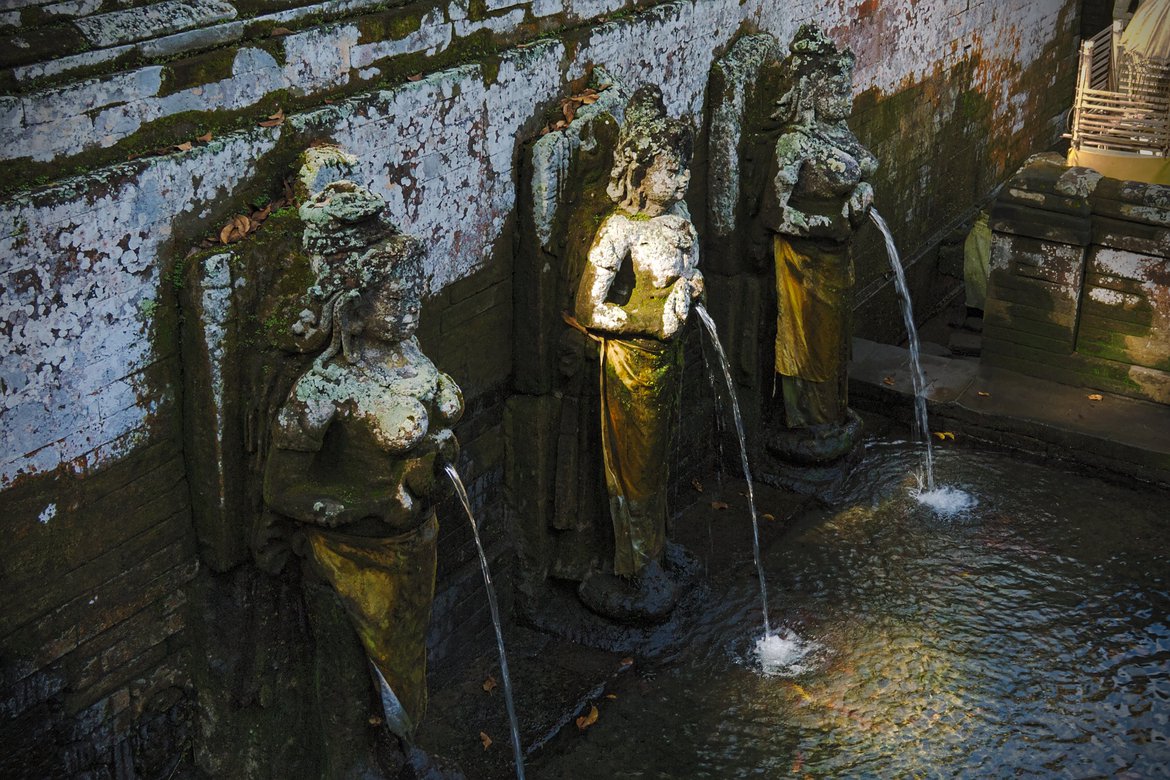
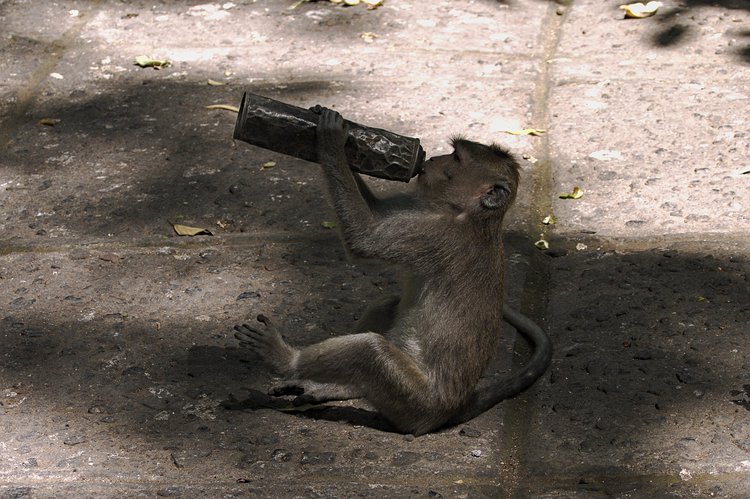
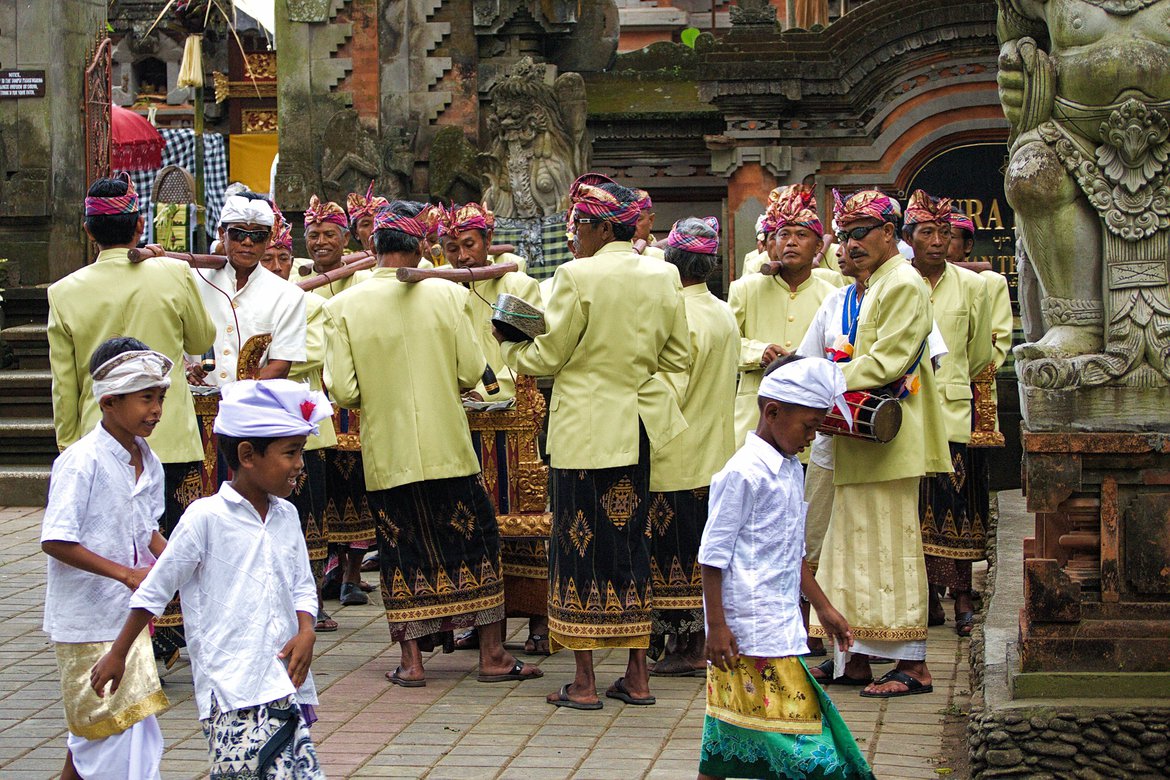
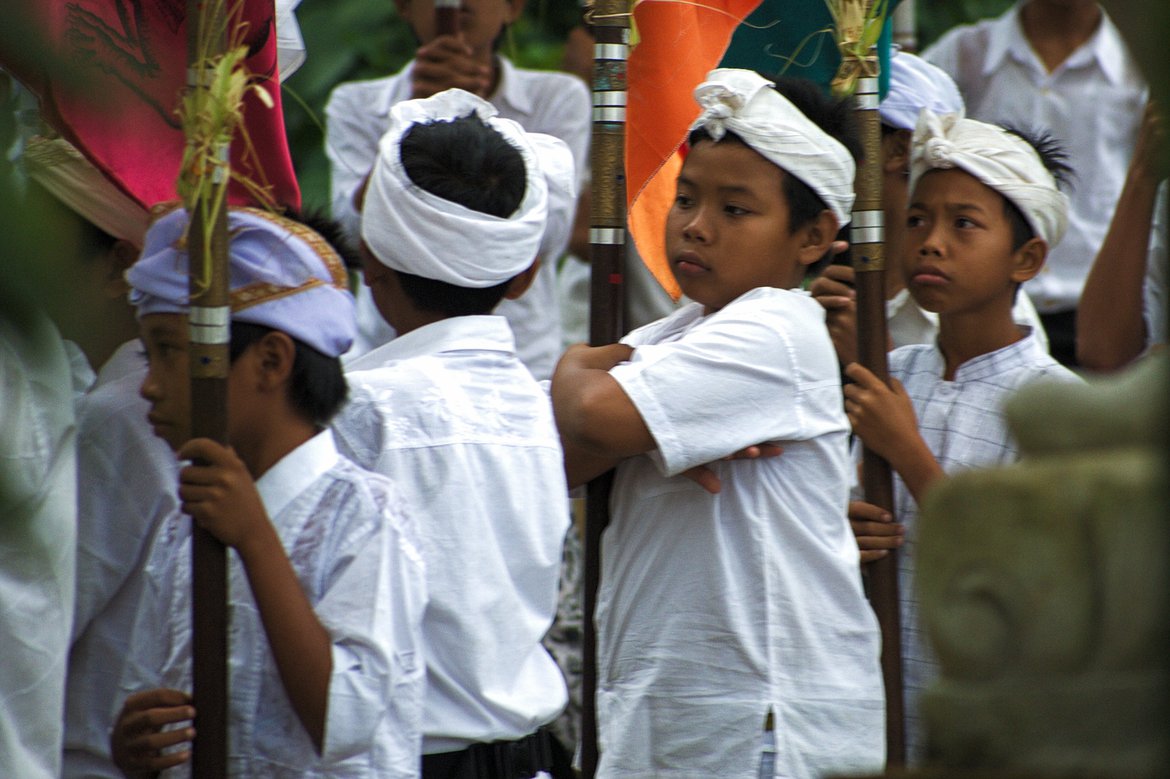
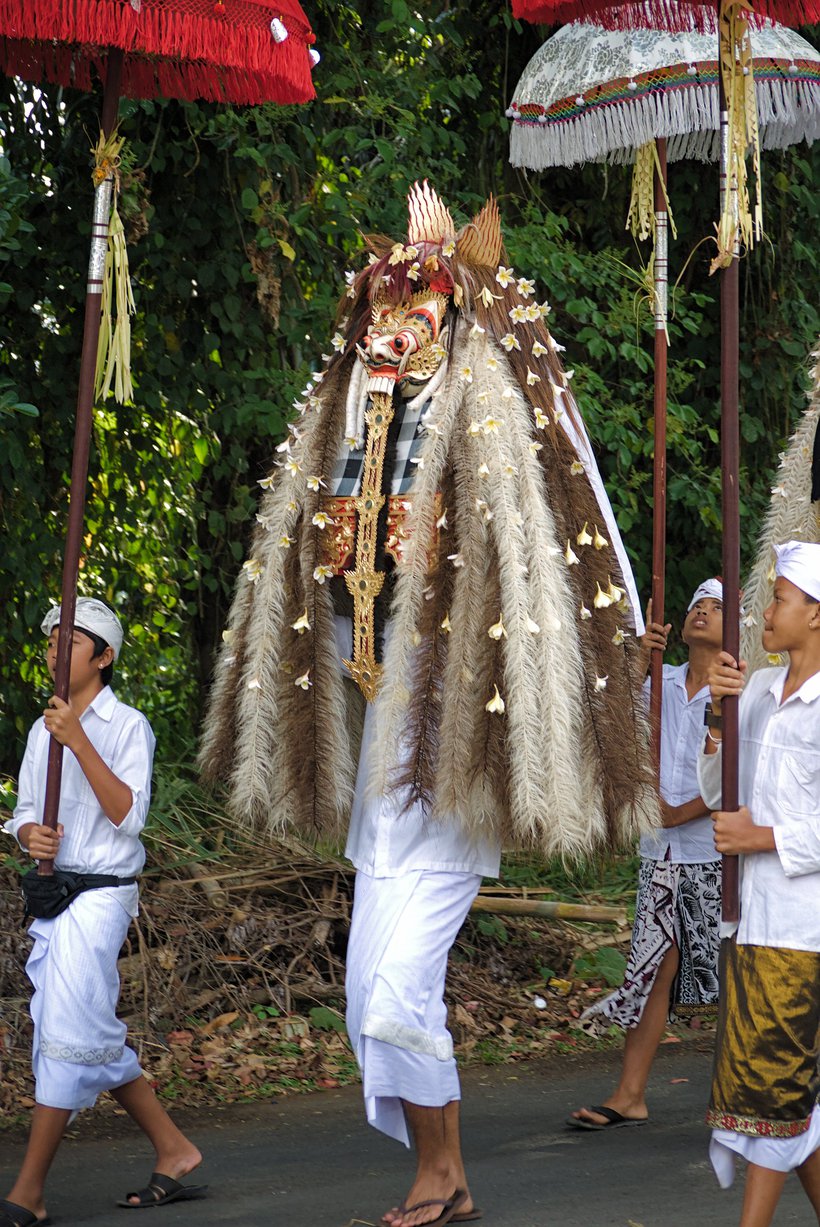
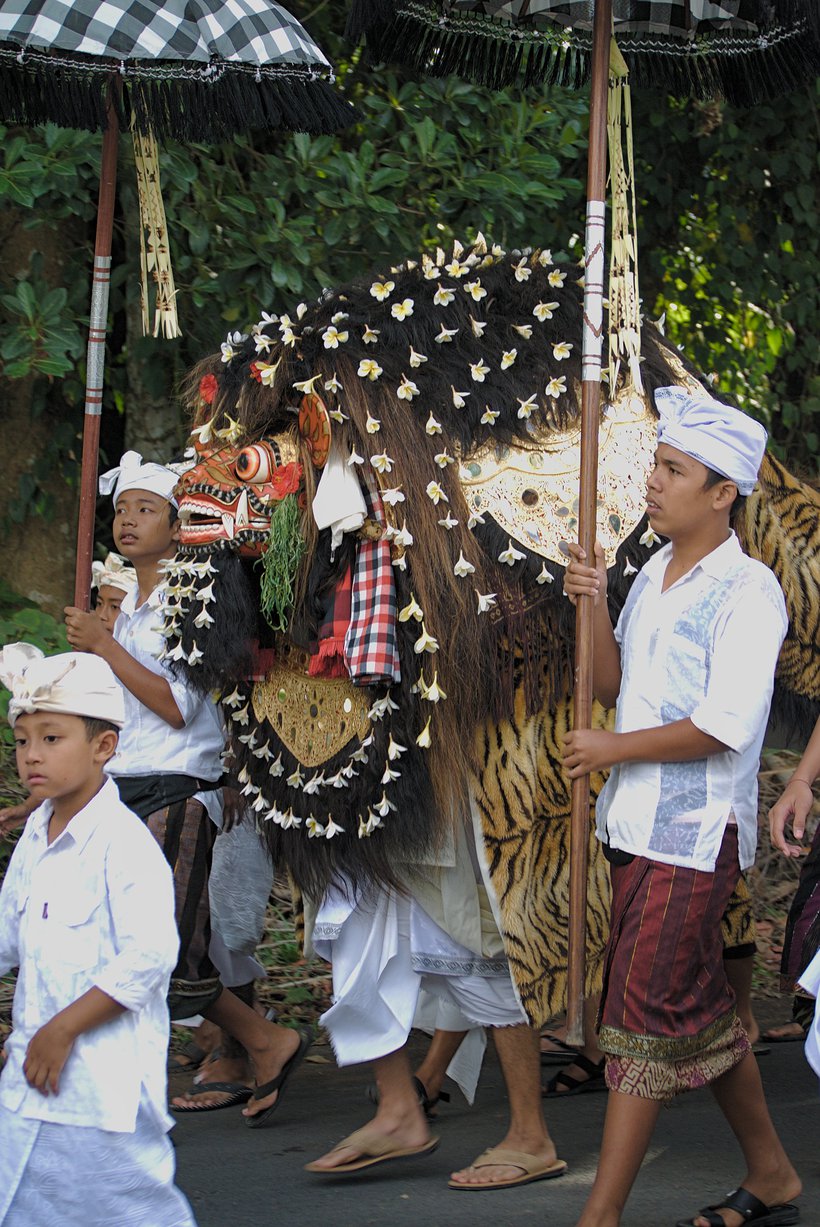
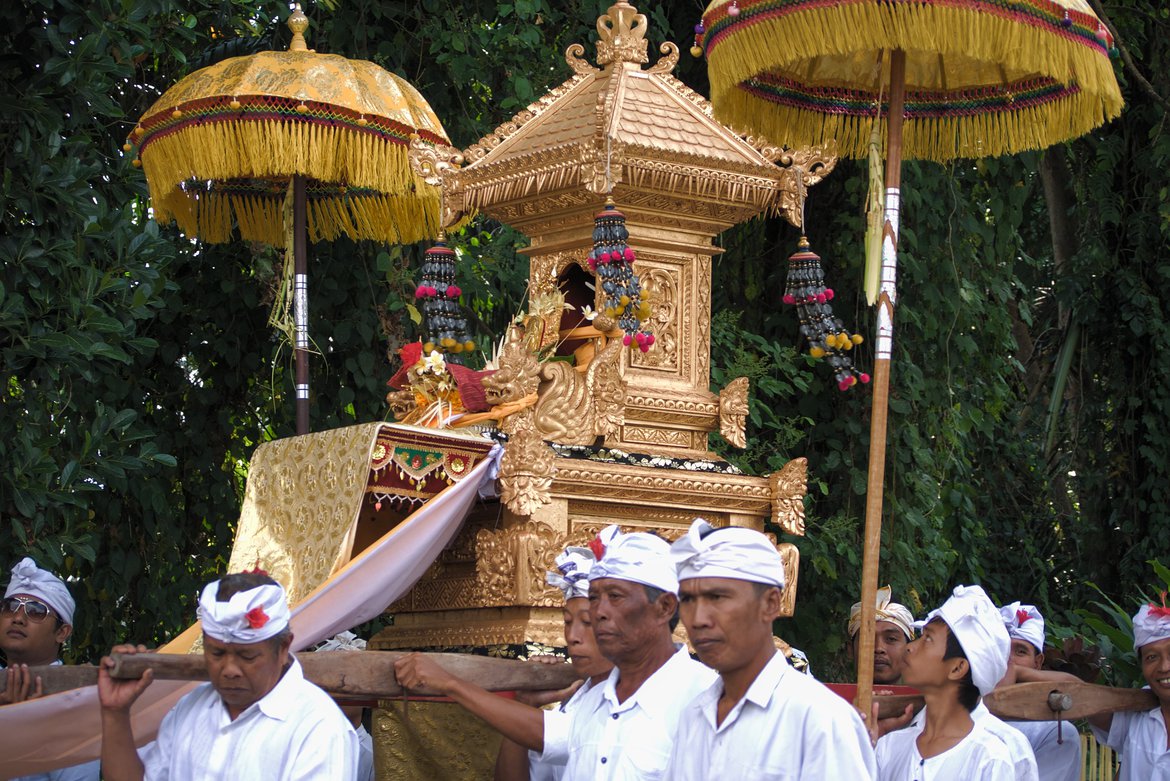

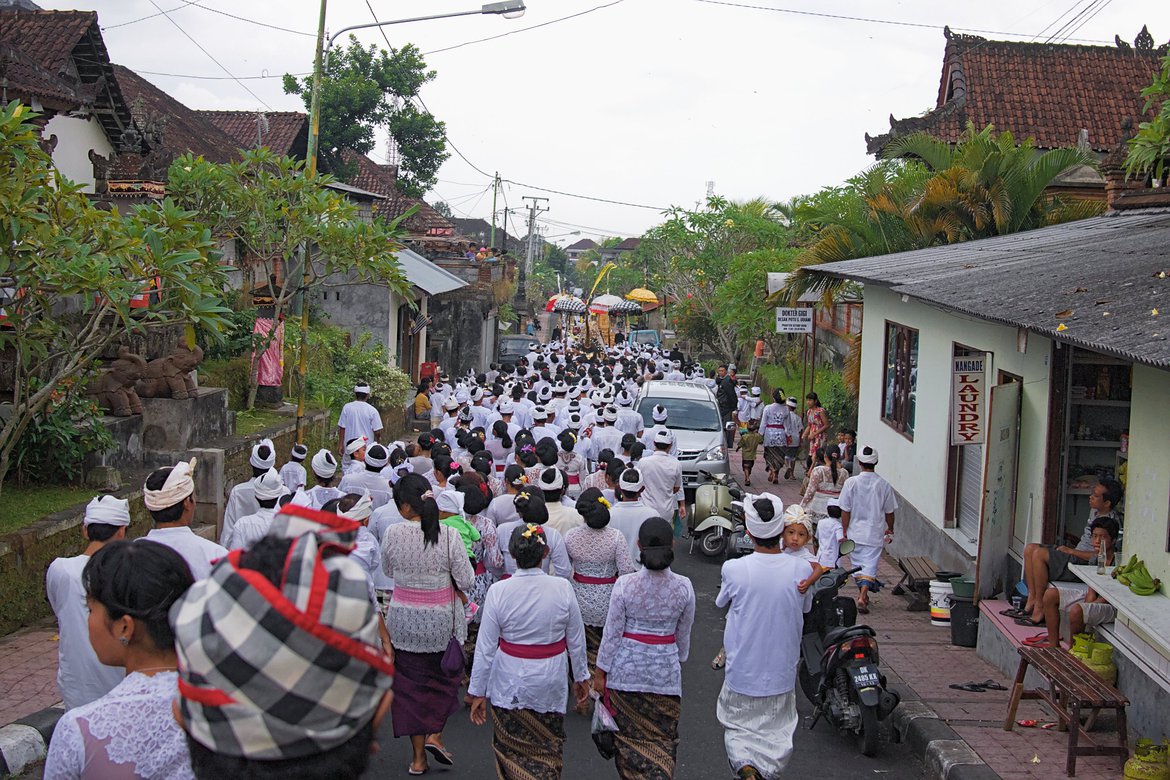
Thoughts?
Please leave a reply:
All comments are moderated, so you won’t see it right away. And please remember Kurt Vonnegut's rule: “god damn it, you’ve got to be kind.” You can use Markdown or HTML to format your comments. The allowed tags are
<b>, <i>, <em>, <strong>, <a>. To create a new paragraph hit return twice.